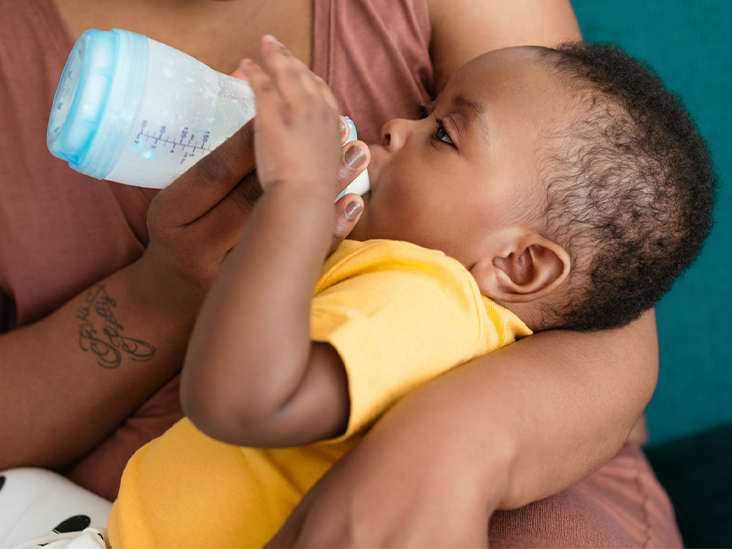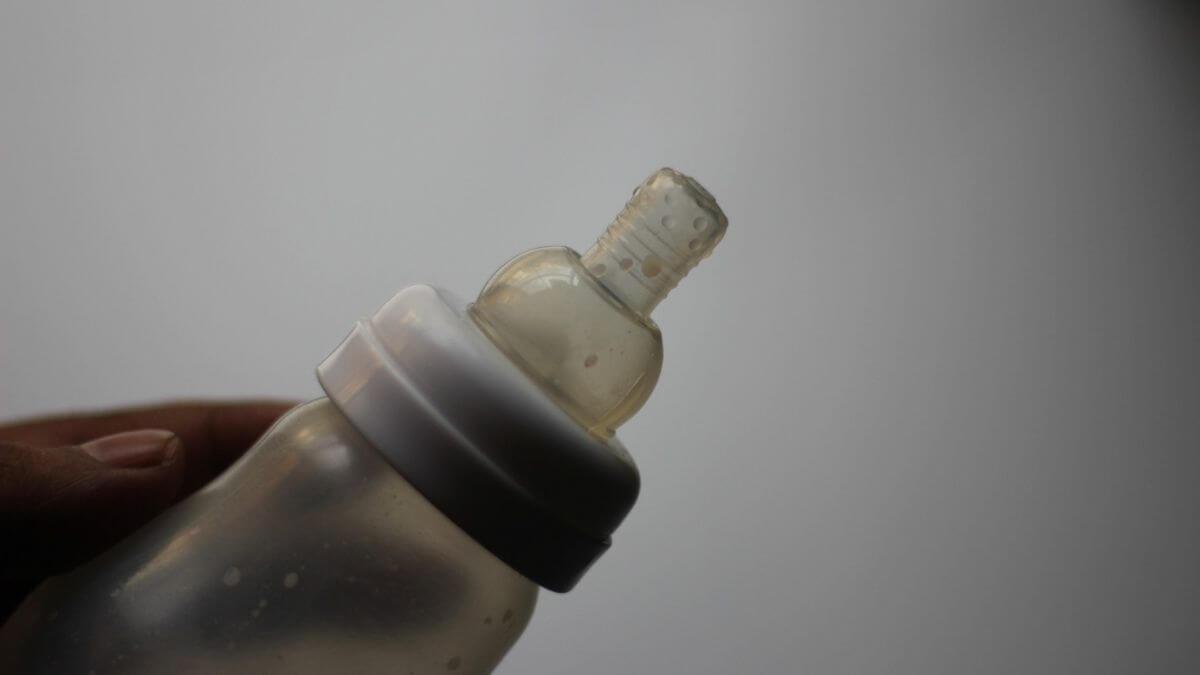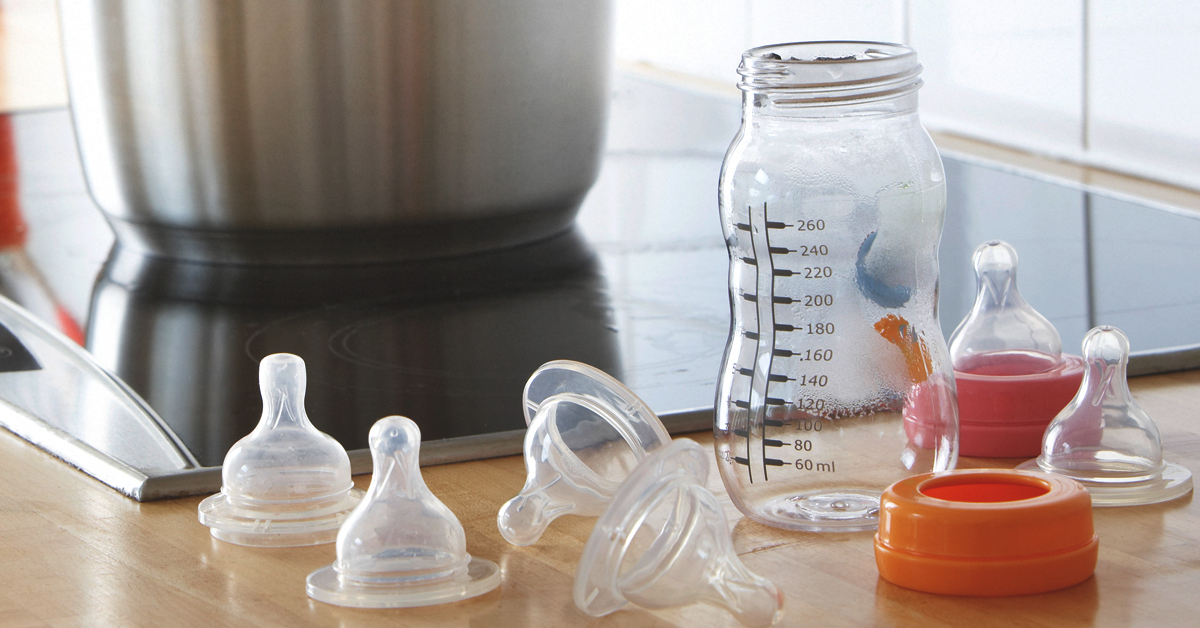Why should you sanitize?
Most of the time, babies use pacifiers or bottles to soothe their teething pains. The only problem is that they are putting something germ-ridden in their mouths!
This can do harm to an infant's health because if germs are transmitted into the mouth, then babies are at risk for early childhood diseases which can be really harmful to their immune system. So parents should always ensure that pacifiers and bottles are sanitized before using them again.
How often should you sanitize bottles and pacifiers?
To control the spread of germs, parents should sanitize bottles and pacifiers at least once a day or more depending on how much they use them. The more they use it, the more germs build-up, and therefore the more frequent it needs to be sanitized. If regular washing does not remove all of the germs, you should sanitize even if your child is not yet sick.
Note, that sanitizing and cleaning are two different things. Cleaning refers to washing away visible dirt, for example using a sponge to wipe down your kitchen countertop. Sanitizing actually removes most germs and bacteria from an object or surface so that they are no longer able to infect people.
Steps on how to clean a bottle
- Fill a pot with water and bring it to a boil. Make sure that there is enough water for your baby's bottle since you will need to submerge the entire thing along with any detachable parts like orthodontic nipples.
- Remove the bottle from the pot and place it on a flat surface to cool off. Your countertop is good enough for this purpose, but make sure that the surface of your work area is clean before working with baby food or bottles. You can use Germ-X wipes if you don't have an extra plate available.
- Once it has cooled enough so that you can touch it without burning yourself, then remove your daughter's pacifier or bottle from the boiling water using tongs or mittens (or whatever object that would prevent you from grabbing anything potentially hot). NOTE: do not touch anything around where you're boiling water because they are most likely too hot to touch!
- Run cold water over the bottle, and start checking it for any defects. You can touch the nipple or any other part of the pacifier to ensure that everything is intact and functional enough to be used again by your baby.
- If you see a loose piece, then place it back in hot water using tongs so that you could fix it easily without dealing with anything potentially cold (which would make fixing small pieces like nipples more difficult).
- Once everything is fixed and ready, then let it air dry in a cool open space until you're not dealing with something potentially wet anymore. This should take about an hour because these bottles usually dry really fast thanks to their metallic parts and plastic insides.
- After one hour has passed, then check the bottle one more time to make sure that it's completely dry. You can use paper towels if you feel like they're still wet, but don't place them on your daughter's pacifier or bottle because this can ruin any parts of it that are made for sucking on (e.g., nipples, etc.).
Steps on how to sanitize a pacifier
- Take a pot and fill it with water. Make sure that the pacifier is submerged in boiling water from top to bottom so that germs and bacteria could be fully removed from any visible scratch it might have on its surface.
- Get a small bowl and fill it halfway with white vinegar or chlorine bleach (5% solution). Fill the remainder of the bowl with clear, clean tap water until you're about three-fourths full. This would be your cleaning solution.
- Soak your child's pacifiers for 10 minutes in this solution, making sure that all parts of them like nipple base and ring are soaked all the way through until there is no more dirt, grime, or any other kind of build-up visible on them.
- After 10 minutes, then drain the solution into your pot and replace it with fresh, clean tap water. Place the pacifiers back in the boiling water for another five minutes. This would help sanitize them more than before so that any bacteria left on them after their first bath will be killed off completely.
- Once again place them back in clean tap water to cool down so you can soak up any excess water before using them on your baby again. If there's still some moisture visible on these objects when you touch them, then heat up small parts of it like nipples with a hairdryer or put it near a fan that is pointed at high speeds directly at whatever you're drying until they are no longer wet.
- Allow the pacifiers to air dry on a flat surface that is just out of your child's reach until they're no longer moist and not wet enough to leave droplets of water all over your baby's face and clothes when you give it back to them after their next nap or feeding session. You can use paper towels or cotton balls for this purpose, but make sure that these objects are placed far away from where your baby can get hold of them (e.g., on top of a bookcase).
How can you use a microwave to sterilize bottles?
You can place any bottle on some paper towels at the bottom, then add water that's hot enough to sanitize it. Add a few tablespoons of bleach for an extra clean feeling, then microwave the bottles for 2 minutes on full power.
If your microwave is not powerful enough to heat up liquids or if you are unable to get past the hissing sound when boiling anything inside it, then you should let the bottles sit in boiling water for 5-10 minutes before letting them cool off completely with water still present in them. Once they are cooled down, make sure that everything is dry before using the bottles again with your baby.
Remember: sterilizing bottles and pacifiers are necessary for your baby because it can prevent bacteria from growing inside her feeding equipment. If you care enough about your daughter's health, then you should also sanitize her pacifier before using it again. As for the bottles, disinfecting them will remove any potential chemicals that could affect their contents (e.g., milk).
Using a microwave for sanitizing a pacifier is possible, but you should not place plastic parts in it (which would melt). For the best results when sanitizing bottles and pacifiers, follow these steps exactly to avoid potential accidents that might ruin your baby's experience with feeding time.
What about electric steam sanitizers?
Electric steam sanitizers are really helpful because you don't have to do anything except pop in the pacifier or bottle and wait for it to be ready (usually about 5 minutes). However, if you can boil water on your stovetop like normal people, then you should definitely use this method of sanitization because it's way cheaper.

Remember the best time to sanitize whatever your baby uses when feeding herself is right after she wakes up from her nap. This is when they are most susceptible to catching any potential illnesses that are lurking around your house! Using a microwave or boiling water is just fine as long as you know what kind of pacifiers and bottles your child likes using the most.
If you want to sterilize your bottles in an electric sanitizer, then you should not place any plastic parts in the open space where the steam comes out. This is because these plastic pieces can melt and ruin everything inside of your electric sanitizer.
If you like using a hot-water sterilizer, then make sure that you follow all safety precautions to avoid potential accidents (e.g., burns). If something falls apart while heating up the bottle or pacifier, then do not try to correct anything because this could damage it further and make it unfit for use by your baby!
These steps will help your daughter/son avoid having bad bacteria growing inside her system after she uses any kind of feeding equipment made available to her by someone else (e.g., family members). Avoiding germs is very important when it comes to baby feeding equipment because these can cause all kinds of stuff from diarrhea to pneumonia in babies that are too young to take care of themselves.
Is it possible to use a dishwasher?
As long as the bottle or pacifier is dishwasher-safe, then you can use a dishwasher to sanitize them. If they are not, then it's best that you do not let your baby use these items since they can melt or otherwise become ruined by the heat of the water inside your dishwasher.
Remember: every item has its own unique properties that should be respected if you want to avoid potential accidents!
What detergents can you use when cleaning the baby`s bottle/pacifier?
Once you are done with boiling or microwaving your bottle or pacifier, you should not use extremely hot water to rinse out the insides. This will make it more susceptible to leaking when filled up with milk again for your baby's next feeding session.
The best detergent to use is dishwashing liquid because this is specifically made for cleaning utensils. Also, avoid using powders or anything that isn't a liquid since these can clump up on the parts of the bottle/pacifier that are hard to reach by hand while rinsing them off.
Remember: using powder detergents will cause some parts of the bottle/pacifier to dry faster than others, which increases the chances of leaks forming inside!
What kind of water should you use to wash the feeding equipment?

Do not use extremely hot water when rinsing out your baby's bottle or pacifier. This is because it will cause parts of the feeding equipment to dry faster than others, which increases their chances of leaking when filled up with milk again.
The best kind of water to use in order to avoid this problem is slightly warm tap water (around 40 degrees Celsius). If you like using cold tap water, then make sure that it isn't too cold since this can also affect the way that your baby's feeding equipment works and make them less effective.
What should you keep in mind during sanitizing?
It's best to sanitize whatever your baby uses when she is at her most vulnerable: after she wakes up from a nap. Never place any plastic parts in the open space of an electric sanitizer or it may melt and ruin everything inside. You can use hot water or a microwave for this!
Dishwashing liquid is the best detergent to use since this is specifically made for cleaning utensils, but avoid powders and anything that isn't liquid since these can clump up on the hard-to-reach areas of the bottle/pacifier while rinsing them off. Wait until everything has dried before using/refilling it again!
Do not rinse out extremely hot water because this will make it more susceptible to leaking when filled up with milk again. Use around 40 degrees Celsius water at the most, even if you like using cold tap water, but make sure it isn't too cold since this can also affect how your baby's feeding equipment works and make them less effective!
Remember: every item has its own unique properties that should be respected if you want to avoid potential accidents!
Final words
It is possible to use a dishwasher to sanitize bottles and pacifiers, but these must be made of materials that are dishwasher-safe.
Liquid detergents such as dishwashing liquid are best for cleaning utensils, but avoid powders or anything else because these can clump up on the harder-to-reach areas of your feeding equipment while rinsing them off. Also, make sure you wait until everything has dried before using/refilling them again!
